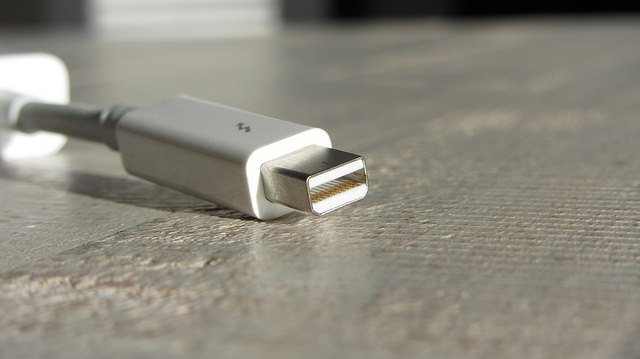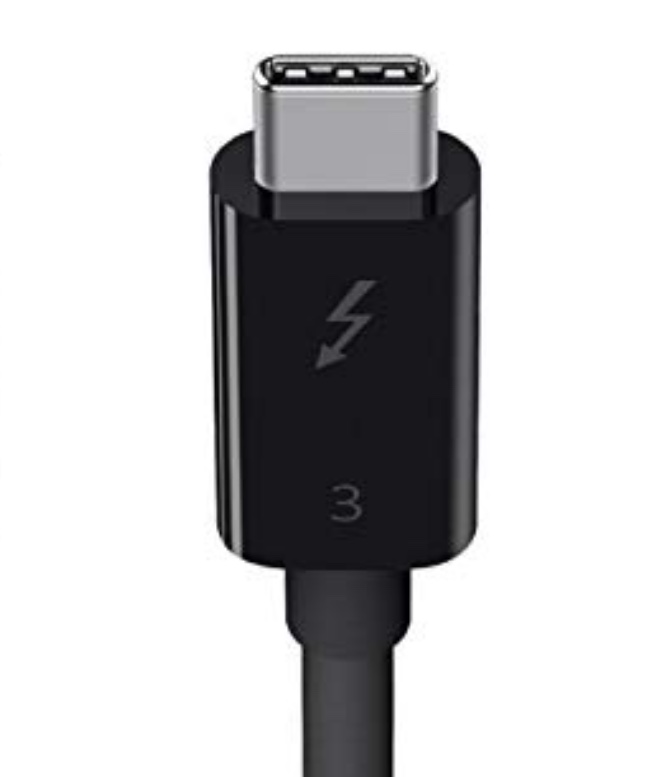A Thunderbolt cable is a high speed serial connector. It’s based on the Mini DisplayPort standard. Both data and power can be supplied by the Thunderbolt cable. Thunderbolt allows for device daisy chaining.
There are two types of Thunderbolt connectors:
- Mini DisplayPort, which is 20 pins and used with Thunderbolt v1 and v2.

2) USB-C, which is 24 pins and used with Thunderbolt v3.
Thunderbolt version 1 sends data over 2 channels with 10 Gbit/s per channel, which means 20 Gbit/s total throughput. Version 1 uses the MiniDisplay port connector.
Thunderbolt version 2 also has 20 Gbit/s throughput but it does so via an aggregation of channels versus just 2 channels. Version 2 also uses the MiniDisplay port connector.
Thunderbolt version 3 has an aggregated throughput of 40 Gbit/s. Version 3 uses a USB-C connector.

Thunderbolt v1, v2, v3 have a maximum copper cable distance of 3 meters. An optical standard allows you to extend the distance up to 60 meters. Thunderbolt allows you to daisy chain up to 6 devices.
Thunderbolt controllers multiplex individual data lanes from connected PCIe and DisplayPort devices for transmission via one duplex Thunderbolt lane. It then de-multiplex them for use by PCIe and DisplayPort devices not he other end.
Thunderbolt is used primarily for macOS devices and sometimes for storage and displays. Thunderbolt can be daisy chained with up to 6 devices. Thunderbolt can interface with USB, Fireware, HDMI, etc.